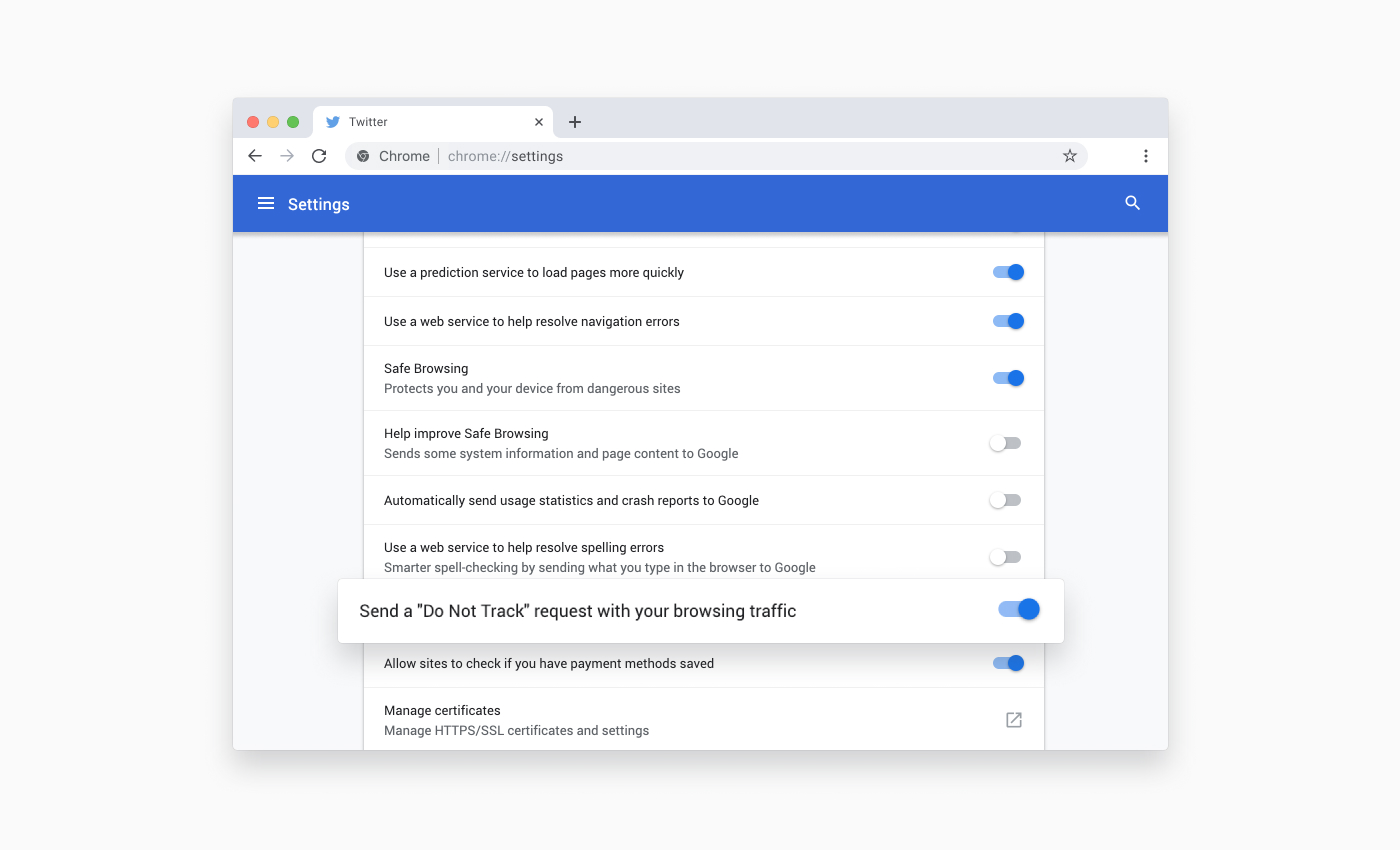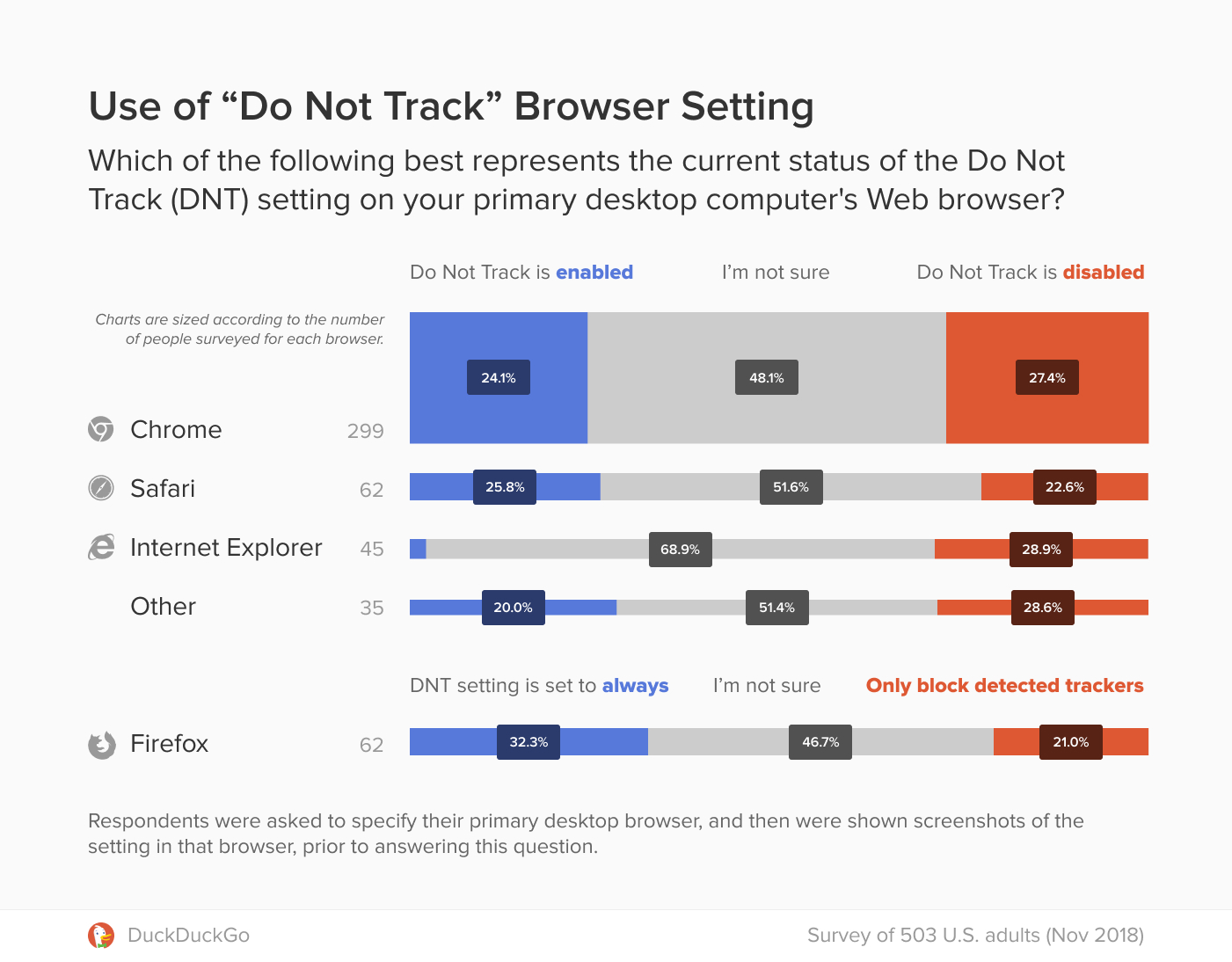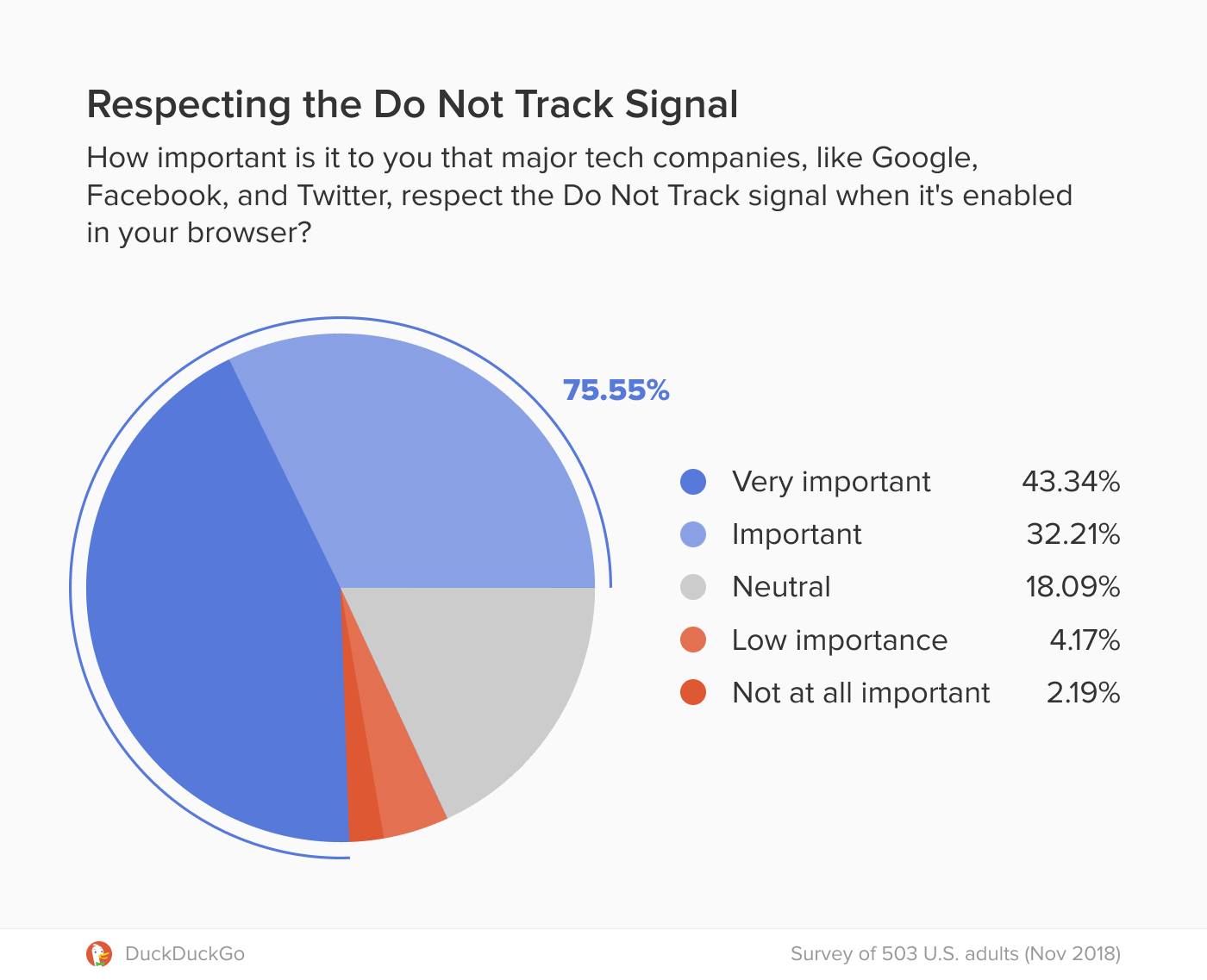Most browsers have a “Do Not Track” (DNT) setting that sends “a special signal to websites, analytics companies, ad networks, plug in providers, and other web services you encounter while browsing, to stop tracking your activity.” Sounds good, right? Sadly, it’s not effective. That’s because this Do Not Track setting is only a voluntary signal sent to websites, which websites don’t have to respect 😧.
Nevertheless, a hefty portion of users across many browsers use the Do Not Track setting. While DNT is disabled by default in most major web browsers, in a survey we conducted of 503 U.S. adults in Nov 2018, 23.1% (±3.7) of respondents have consciously enabled the DNT setting on their desktop browsers. (Note: Apple is in the process of removing the DNT setting from Safari.)
We also looked at DNT usage on DuckDuckGo (across desktop and mobile browsers), finding that 24.4% of DuckDuckGo requests during a one day period came from browsers with the Do Not Track setting enabled. This is within the margin of error from the survey, thus lending more credibility to its results.
[…]
It can be alarming to realize that Do Not Track is about as foolproof as putting a sign on your front lawn that says “Please, don’t look into my house” while all of your blinds remain open. In fact, most major tech companies, including Google, Facebook, and Twitter, do not respect the Do Not Track setting when you visit and use their sites – a fact of which 77.3% (±3.6) of U.S. adults overall weren’t aware.
There is simply a huge discrepancy between the name of the setting and what it actually does. It’s inherently misleading. When educated about the true function and limitation of the DNT setting, 75.5% (±3.8) of U.S. adults say it’s “important” or “very important” that these companies “respect the Do Not Track signal when it is enabled.” So, in shocking news, when people say they don’t want to be tracked, they really don’t want to be tracked.
As a matter of fact, 71.9% (±3.9) of U.S. adults “somewhat favor” or “strongly favor” a federal regulation requiring companies to respect the Do Not Track signal.
We agree and hope that governments will focus this year on efforts to enforce adherence to the Do Not Track setting when users enable it. As we’ve seen here and in our private browsing research, many people seek the most readily available (though often, unfortunately, ineffective) methods to protect their privacy.
Source: The “Do Not Track” Setting Doesn’t Stop You from Being Tracked

Robin Edgar
Organisational Structures | Technology and Science | Military, IT and Lifestyle consultancy | Social, Broadcast & Cross Media | Flying aircraft




